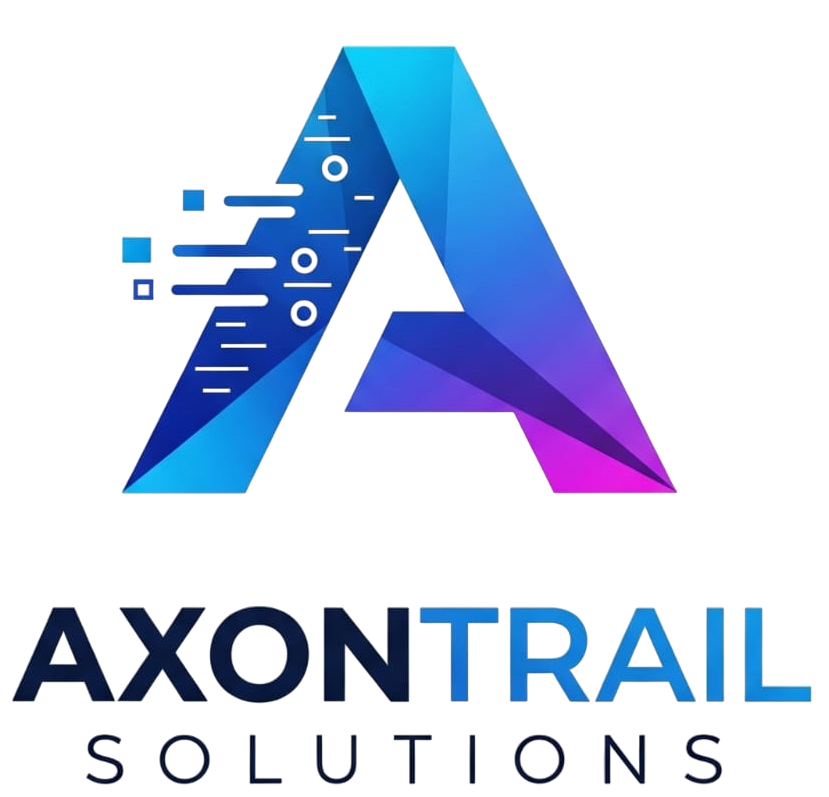
- July 9, 2025
- AxonTrail Editorial Team
- 0
Table of Contents
ToggleHow Purchase Management System Challenges Impact Traders—and How to Overcome Them
Introduction
Every trader understands that smooth procurement is the lifeblood of their operation. Yet far too often, businesses wrestle with Purchase Management System challenges that slow ordering, bloat costs and undermine profitability. Whether it’s misplaced purchase orders, inconsistent supplier rates or manual data entry errors, these obstacles plague enterprises large and small. In this article, we explore who faces these hurdles, what exactly the typical Purchase Management System challenges are, why they persist, and how modern solutions can transform pain points into competitive advantage.
By examining real-world examples and offering clear implementation steps, we’ll demonstrate how traders can shed outdated methods—registers, spreadsheets and fragmented approvals—and embrace automation that delivers end-to-end visibility. Along the way, we’ll highlight best practices to ensure a smooth transition. If your business has struggled with inventory discrepancies, invoice mismatches or approval bottlenecks, you’re not alone: these Purchase Management System problems affect thousands of organisations every day. Read on to discover a roadmap for success.
1. Who Faces Purchase Management System Challenges?
1.1 Small and Medium Enterprises (SMEs)
SMEs often lack dedicated procurement teams, relying instead on overstretched staff juggling multiple roles. Their Purchase Management System problems typically include manual order creation, inconsistent pricing and limited supplier visibility.
1.2 Large Distributors and Wholesalers
As transaction volumes grow, legacy systems buckle. Distributors contend with order duplication, disparate supplier portals and slow approvals—classic Purchase Management System challenges that hinder scale.
1.3 Retail Chains
Multi-outlet retailers must synchronise orders across stores and warehouses. Without centralised workflows, the same Purchase Management System troubles reappear at every branch: overstocking here, stock-outs there.
1.4 Manufacturing Units
Component shortages can halt production lines. Manufacturers facing Purchase Management System issues wrestle with lead-time variability, ad hoc purchase requests and reactive rather than proactive procurement.
1.5 Service Providers
Professional services firms—the consultants, agencies and contractors—deal with expense controls, vendor rate cards and compliance audits. For them, Purchase Management System problems arise when invoices and purchase orders drift out of sync.
2. What Are the Core Purchase Management System Challenges?
2.1 Manual Data Entry Errors
Hand-typed purchase orders and invoice matching invite typos and misclassifications. These simple Purchase Management System difficulties lead to payment delays and supplier disputes.
2.2 Lack of Standardised Workflows
Without approval hierarchies, purchase requests may bypass budgeting or oversight. Uncontrolled spend is a common Purchase Management System problems in organisations moving too quickly without digital gates.
2.3 Poor Supplier Management
Maintaining multiple rate cards, contract terms and delivery schedules in siloed spreadsheets exacerbates Purchase Management System troubles, making it hard to negotiate volume discounts or track compliance.
2.4 Limited Visibility into Spend
When procurement data sits in disconnected systems, finance teams cannot see aggregated spend or supplier performance in real time. This opacity is at the heart of many Purchase Management System troubles.
2.5 Approval Bottlenecks
Email chains and paper sign-offs slow down urgent purchases. Traders experience Purchase Management System problems every time critical orders miss delivery windows due to approval delays.
2.6 Inventory Mismatches
Over-ordering or under-ordering parts and materials stems from outdated purchase logs. This lag between actual stock and recorded data is a persistent Purchase Management System challenge.
3. Why Do Purchase Management System Challenges Persist?
3.1 Legacy Processes and Resistance to Change
Many businesses continue to rely on registers, filing cabinets and standalone spreadsheets. These entrenched practices perpetuate Purchase Management System challenges long after digital alternatives emerge.
3.2 Siloed Departments
Procurement, finance and operations teams often use disparate tools. The lack of an integrated platform magnifies Purchase Management System troubles, as data handoffs occur via email or paper.
3.3 Complexity of Vendor Ecosystems
Global suppliers, regional distributors and local artisans each have distinct terms and catalogues. Managing this diversity manually compounds Purchase Management System issues daily.
3.4 Inadequate IT Infrastructure
Small traders may lack the budget or expertise for sophisticated systems. They tolerate Purchase Management System problems, unaware that cloud-based solutions can be both affordable and user-friendly.
3.5 Rapid Business Growth
Fast-expanding companies outgrow ad hoc tools. As transaction volumes spike, old registers collapse under the weight of data, intensifying Purchase Management System issues unless the move to digital is timely.
4. How to Overcome Purchase Management System Challenges
4.1 Centralise Procurement Workflows
Adopt a unified platform that consolidates purchase requests, approvals, orders and invoices. By centralising data, you eliminate dozens of manual touchpoints and tame core Purchase Management System challenges.
4.2 Automate Purchase Order Generation
Configure templates with pre-approved suppliers, pricing tiers and tax rules. Automatic PO creation removes typo-prone manual entry and directly addresses Purchase Management System challenges around errors and delays.
4.3 Implement Role-Based Approvals
Set up tiered approval hoops—based on order value or department—within the digital system. Automated routing slashes approval times and neutralises bottlenecks that exacerbate Purchase Management System problems.
4.4 Integrate Supplier Portals
Enable suppliers to update catalogue prices, availability and lead times in real time. Direct connectivity reduces mismatches and resolves Purchase Management System challenges linked to stale data.
4.5 Leverage Analytics for Spend Visibility
Dashboards that track spend by category, vendor and period empower finance teams. Insight into total cost of ownership and supplier performance conquers Purchase Management System challenges around opacity and unmanaged budgets.
4.6 Sync Inventory with Procurement
Link purchasing modules with inventory management. Automated reorder alerts and stock-level triggers prevent over-stocking and under-stocking—core Purchase Management System challenges solved through tight integration.
5. Real-World Case Studies
Case Study A: Boutique Electronics Retailer
A specialty electronics shop faced frequent stock-outs during flash sales. Daily Purchase Management System challenges around manual reorders caused lost revenue. By implementing a cloud-based system, they automated reorder points and reduced out-of-stock events by 80% in three months.
Case Study B: Regional Food Distributor
Handling dozens of perishable items, a food distributor battled expiry-driven waste. Their Purchase Management System challenges included inconsistent supplier lead times and manual rate-card updates. After integrating supplier portals, spoilage dropped by 50% and invoice accuracy exceeded 99%.
Case Study C: Professional Services Firm
An IT consultancy issued multiple client-specific purchase orders for hardware and software licences. Their Purchase Management System challenges centred on mismatched billing codes and delayed approvals. Adopting an automated workflow slashed PO-to-invoice reconciliation time by 70%, boosting cash-flow predictability.
6. Best Practices for Selecting a Solution
6.1 Evaluate End-to-End Functionality
Look for platforms that cover request-to-pay, supplier management and spend analytics. The right tool eliminates the full spectrum of Purchase Management System challenges in one suite.
6.2 Prioritise User Experience
Choose intuitive, role-based interfaces so procurement, finance and operations teams adopt the system quickly. Ease of use mitigates Purchase Management System challenges arising from low user engagement.
6.3 Ensure Scalable, Cloud-Native Architecture
Avoid on-premises solutions that strain IT budgets. Cloud-hosted options scale with your business and lower the barrier to entry, dissolving Purchase Management System challenges related to infrastructure.
6.4 Seek Robust Integration Capabilities
Ensure seamless connectors for ERP, accounting, inventory and payment gateways. Tight interoperability eradicates the Purchase Management System challenges born of data silos.
6.5 Demand Comprehensive Support and Training
Vendors should offer onboarding, FAQs, tutorials and live assistance. Strong vendor partnership minimises downtime and speeds resolution of any residual Purchase Management System challenges.
Conclusion
The array of Purchase Management System challenges—from data entry errors and siloed workflows to approval delays and poor spend visibility—need not define your business. By transitioning to a unified, automated procurement platform, traders can streamline purchase processing, strengthen supplier relationships and unlock clearer insights into costs and performance. Real-world success stories demonstrate rapid ROI, while best practices guide selection and deployment.
At AxonTrail.com, we specialise in delivering cloud-native, end-to-end solutions that address every facet of procurement complexity. Our modular architecture empowers businesses to conquer Purchase Management System challenges at their own pace, ensuring smoother operations and sustained growth. Don’t let outdated processes hold you back—embrace automation today and transform your purchasing from a challenge into a strategic advantage.
Frequently Asked Questions
What are common Purchase Management System challenges?
Key issues include manual data entry errors, siloed workflows, approval bottlenecks, poor supplier management and lack of spend visibility.How does automation resolve these challenges?
Automated purchase orders, role-based approvals and real-time supplier integration eliminate manual steps, accelerating processing and reducing errors.Can small traders afford such systems?
Cloud-based platforms offer modular, subscription pricing with minimal upfront investment, making them accessible to small and mid-sized businesses.How long does implementation typically take?
Basic setups can go live within weeks; full rollouts—including integrations and data migration—usually complete in 2–3 months.Is data secure in cloud procurement platforms?
Yes. Leading vendors employ encryption, multi-factor authentication and ISO-certified data centres to safeguard sensitive information.How do I choose the right solution?
Evaluate end-to-end features, user experience, scalability, integration capabilities and vendor support to ensure comprehensive coverage.What ROI can be expected?
Organisations often realise 20–30% reductions in procurement cycle times, 10–15% savings on spend and significant gains in cash-flow predictability.Does AxonTrail.com support legacy data migration?
Absolutely. We provide automated tools to extract, cleanse and import historical procurement records into the new system.Can these platforms integrate with existing ERPs?
Yes. Most solutions offer robust APIs and pre-built connectors for popular ERP, CRM and accounting packages.What key metrics should be tracked post-implementation?
Monitor purchase cycle time, order accuracy rate, approval turnaround, supplier lead-time variance and overall spend under management.

